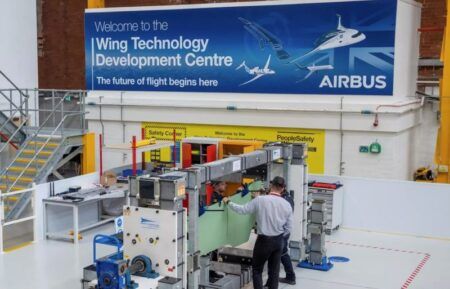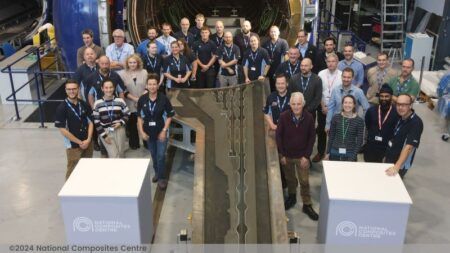NASA’s X-59 Quiet SuperSonic Technology aircraft is undergoing ground testing at Lockheed Martin facilities in Texas, prior to the supersonic demonstrator’s first flight which is planned for later this year.
NASA’s X-59 Quiet SuperSonic Technology aircraft (QueSST) is being built by Lockheed engineers for NASA to show that a new aerodynamic shape, engine configuration and video-enabled controls can reduce the amount of noise generated by sonic booms.
Several of the technologies being proven by QueSST could be used by a new generation of supersonic aircraft. In addition, the data generated by QueSST’s flight testing campaign will help to develop new aviation regulations governing the noise supersonic aircraft are allowed to make while flying overland.
While in Texas, ground testing of the X-59 will be done to ensure the aircraft can withstand the loads and stresses that typically occur during flight. The team will also calibrate and test the fuel systems before the X-59 makes the journey back to California for more tests and completion.
The X-59 is designed to reduce the loudness of the sonic boom, which occurs when an aircraft flies faster than the speed of sound, to a gentle, quiet sonic thump. The X-plane will demonstrate this in flights over communities around the U.S. starting in 2024, as NASA collects data that could open the future to commercial supersonic flights over land.
Related Stories
VIDEO: Watch the X-59 QueSST supersonic aircraft take shape at Lockheed Martin’s Skunk Works
NASA completes testing of cockpit vision system for supersonic X-59 aircraft





